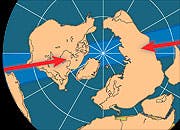- Science
- Natural Sciences
- SEE MORE
- classical
- general
- talk
- News
- Family
- Bürgerfunk
- pop
- Islam
- soul
- jazz
- Comedy
- humor
- wissenschaft
- opera
- baroque
- gesellschaft
- theater
- Local
- alternative
- electro
- rock
- rap
- lifestyle
- Music
- como
- RNE
- ballads
- greek
- Buddhism
- deportes
- christian
- Technology
- piano
- djs
- Dance
- dutch
- flamenco
- social
- hope
- christian rock
- academia
- afrique
- Business
- musique
- ελληνική-μουσική
- religion
- World radio
- Zarzuela
- travel
- World
- NFL
- media
- Art
- public
- Sports
- Gospel
- st.
- baptist
- Leisure
- Kids & Family
- musical
- club
- Culture
- Health & Fitness
- True Crime
- Fiction
- children
- Society & Culture
- TV & Film
- gold
- kunst
- música
- gay
- Natural
- a
- francais
- bach
- economics
- kultur
- evangelical
- tech
- Opinion
- Government
- gaming
- College
- technik
- History
- Jesus
- Health
- movies
- radio
- services
- Church
- podcast
- Education
- international
- Transportation
- Other
- kids
- podcasts
- philadelphia
- Noticias
- love
- sport
- Salud
- film
- and
- 4chan
- Disco
- Stories
- fashion
- Arts
- interviews
- hardstyle
- entertainment
- humour
- medieval
- literature
- alma
- Cultura
- video
- TV
- Science
- en
Land on the Run

b'Hang on to your globe. One day it\\u2019ll be a collector\\u2019s item. The arrangement of continents you see today is not what it once was, nor what it will be tomorrow. Thank plate tectonics.\\nNow evidence suggests that the crowding together of all major land masses into one supercontinent \\u2013 Pangaea, as it\\u2019s called \\u2013 is a phenomenon that\\u2019s happened over and over during Earth\\u2019s history. And it will happen again. Meet our future supercontinent home, Amasia, and learn what it will look like.\\nMeanwhile, as California waits for the Big One, geologists discover that major earthquakes come in clusters. Also, our planet is not the only solar system body with tectonic activity. Icy Europa is a mover and shaker too.\\nAnd why is land in the western part of the U.S. literally rising up? Mystery solved!\\nGuests:\\n\\n\\nJohn Dvorak \\u2013 Geologist, author of Earthquake Storms: The Fascinating History and Volatile Future of the San Andreas Fault\\n\\n\\n\\nAdrian Borsa \\u2013 Geophysicist, Scripps Institute of Oceanography, University of California, San Diego\\n\\n\\nRoss Mitchell \\u2013 Geologist and post-doctoral scholar at the California Institute of Technology\\n\\n\\nSimon Kattenhorn \\u2013 Structural geologist and a planetary geologist who did his work on Europa while at the University of Idaho\\n\\nFirst released September 29, 2014\\nLearn more about your ad choices. Visit megaphone.fm/adchoices'